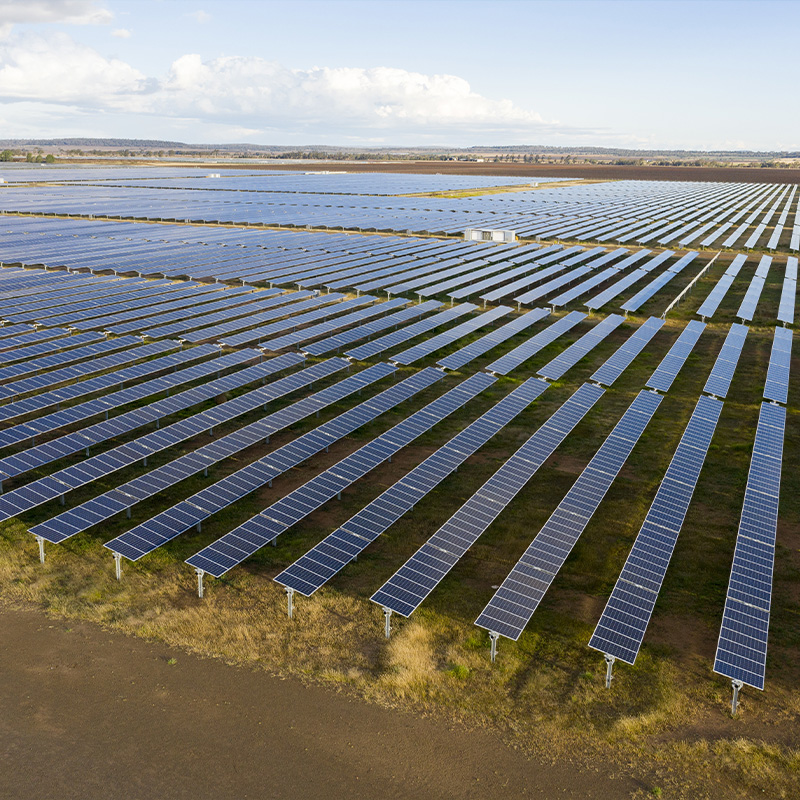
Australia: An Energy Powerhouse?
Rise of the Mega Project
Since it first set a mandatory target for renewable energy in 2001, Australia’s efforts on renewable energy have been both impressive and aggressive. This includes increasing its target in 2010 and hitting its 2020 target a year early in 2019. A curious facet of renewables in Australia is that its role in the energy mix is much more politically polarising than in other developed countries. Historically the Abbott federal government watered down targets and closed support mechanisms in the 2010s and a similar situation is emerging under the current Morrison. Some of the optimism that occurred with the achieving of the 2020 targets has cooled as a lack of a federal strategy has placed the onus on states to pick up the slack on renewables. A curious exception however has been the increasing trend towards incredibly large renewables projects in Australia.
An Energy Exporter
“We can choose a future where we export more products and outsource fewer jobs” is a quote from a Barack Obama at the Democratic National Convention 2012. Half a world away and 8 years later, the sentiment has an uncanny resonance with the emergence of two mega projects in Australia: The Sun Cable and the Asian Renewable Energy Hub. Both projects are focused on exporting energy to Asia and in the case of the Sun Cable scheme’ lauded by the Energy Minister Angus Taylor “Australia has long been a world leader in energy exports. As technologies change, we can capitalize on our strengths in renewables to continue to lead the world in energy exports.” The scale and ambition of both projects is impressive:
The Sun Cable
The Sun Cable or as it is more formally known, Australia-ASEAN Power Link (AAPL), is looking to combine what could be the largest solar farm in the world, with the largest battery and utilising the largest transmission system (some 4,500km from Darwin to Singapore) to export clean energy from Australia to Singapore and Indonesia. With project costs estimated between $14bn-$20bn, the scheme is likely to net $2bn worth of exports per annum. It will account for 20% of Singapore’s energy use once in place.
Asian Renewable Energy Hub
Moving from the Northern Territory and the Sun Cable to Western Australia, we come across another major energy export project: the Asian Renewable Energy Hub (AREH). The project has received approval from the Western Australian Environmental Protection Agency and covers an area of over 6,500km² and will play host to around 15GW of solar and wind capacity. Whilst the scheme will provide energy to consumers in the Pilbara region, it will also feature a green hydrogen facility that will be exporting to Asia. It is expected from this project that it will generate 40TWh of clean electricity per year with an estimated life span of at least 50 years.
These two projects alone will help to cement Australia’s status as a top tier energy exporter.
Keeping the Home Fires Burning
If Australia is leading a charge on renewable energy for external export, the domestic position is a little less clear cut. The Snowy 2.0 pumped hydro project was the largest committed project in Australian history, the scheme has attracted significant criticism in relation to its environmental and economic credentials. Based on
the Australian Energy Market Operator (AEMO) recently published, 2020 Integrated System Plan (ISP) for the National Electricity Market (NEM) several critics suggest that Snowy 2.0 may not recover its outlay. Hopefully the recently approved Bass Strait Cable which would enable the Battery of the Nation project connecting hydro resources in Tasmania to the mainland can help restore faith in hydro energy solutions in Australia. Some questions still remain over who will foot the $3.5bn cost of the transmission cable but there is grounds for optimism that a solution can be found.
If question marks over costs are dogging the domestic hydro market, a more recent development has left a few more renewable energy advocates scratching their heads. The government seems to be bucking global trends by looking to provide stimulus to the natural gas sector – this announcement coinciding with upcoming decisions to be made on the controversial Narrabri gas project in New South Wales are likely to alarm many.
Concluding thoughts
It would be easy for outside observers to take a cynical view of Australia as an energy powerhouse, the dichotomy of highly organised and ambitious export focused projects versus awkward domestic schemes and a possible natural gas resurgence is confusing to say the least. In some respects, the current focus is too economic and lacks empathy with environmental goals. It may also serve to isolate Australia. Ross Garnaut, a prominent economist, recently spoke on the Clean Energy Council’s Australian Clean Energy Summit Webinar Series. He was particularly interested in what a Biden victory in the US election in November could mean for Australia. Garnaut’s view was that Australia could end up in the “Naughty Corner” and that a Biden presidency might put significant pressure on Australia as the US sought to pick up a greater leadership role on sustainability. It is a big “If”, you would struggle to write off Trump (after all he overcame huge odds the first time around) but it does point to a live risk that Australia could find itself out of step with global energy opinion very easily and suddenly.
